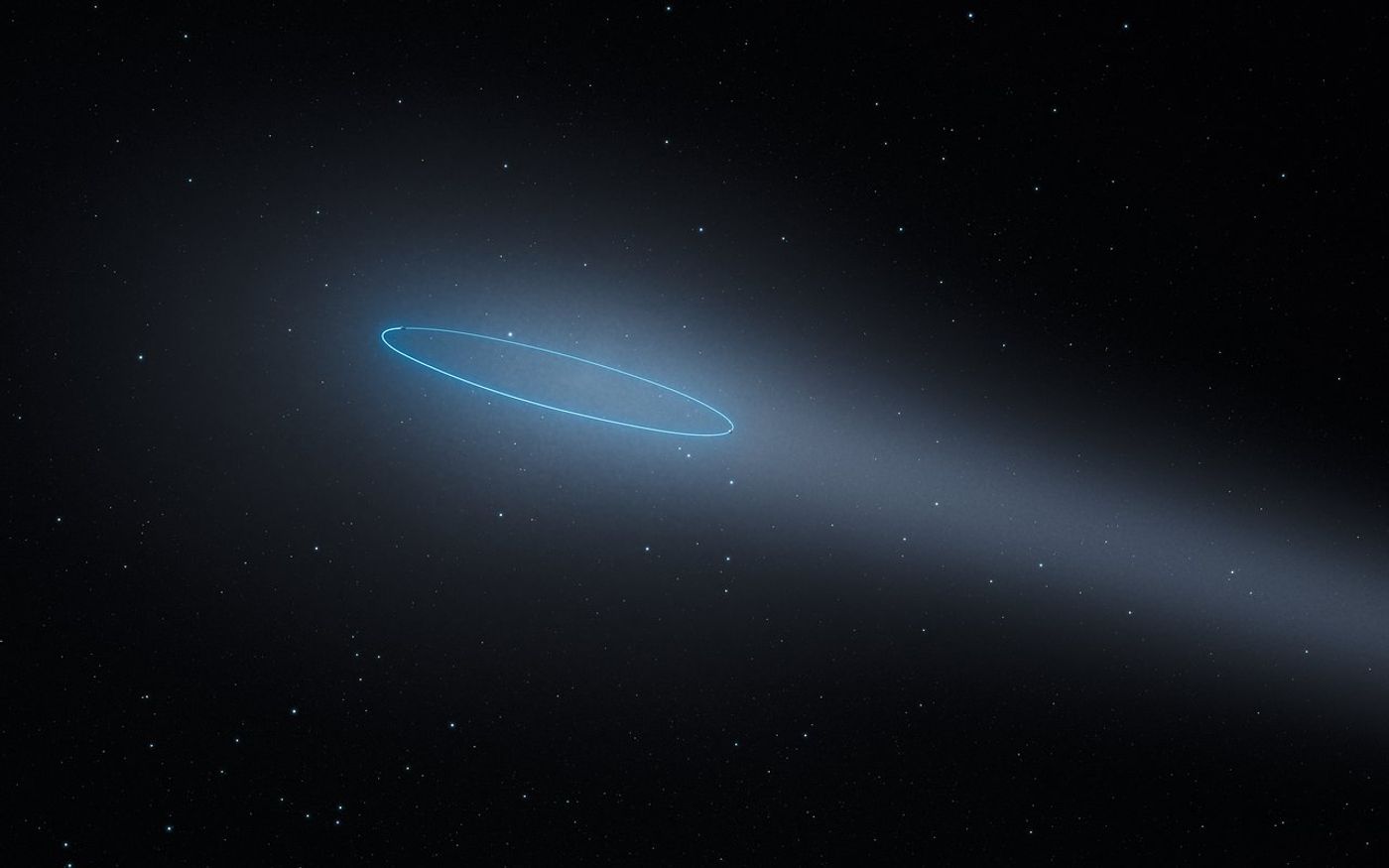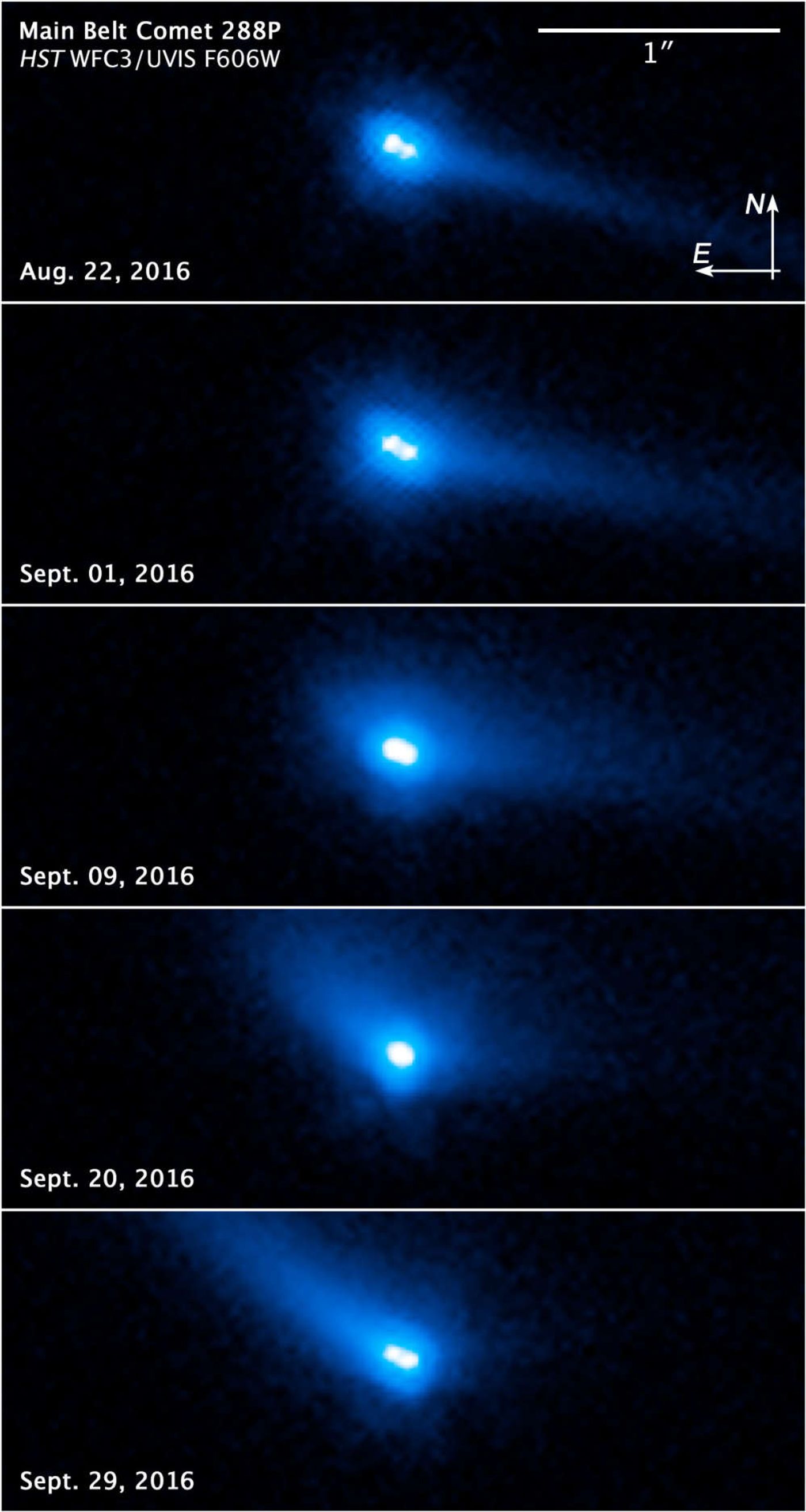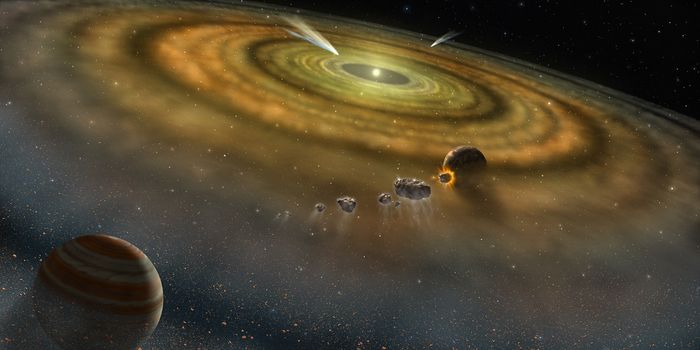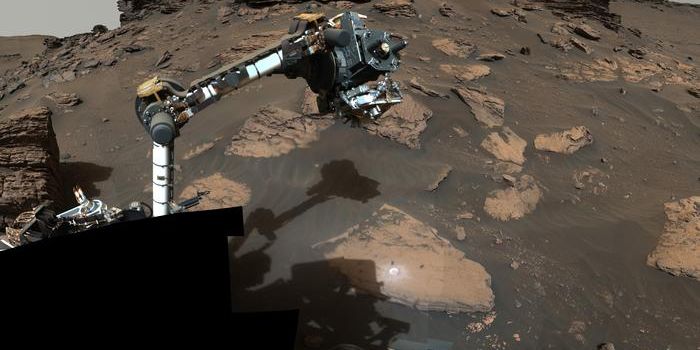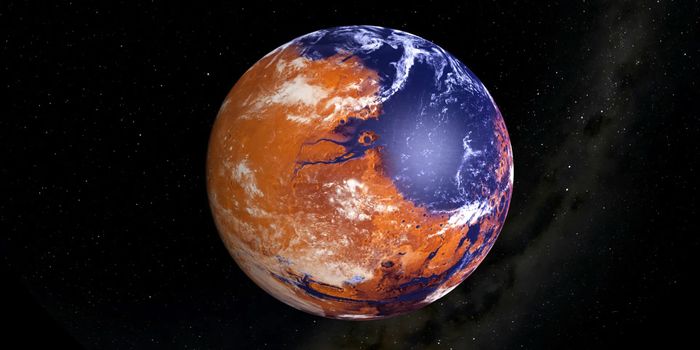Binary Asteroid Gets Categorized as a Main Belt Comet for the First Time
While astronomers studied the asteroid belt in between Mars and Jupiter with the Hubble Space Telescope over the course of several years, they came across a rather peculiar finding in a binary asteroid system dubbed 288P; it exhibits unique characteristics unlike other binary asteroids found before it.
Image Credit: ESA/Hubble, L. Calçada
Binary asteroids are somewhat common, but 288P stood out from the rest for a couple of unique reasons. Both asteroids making up 288P are large, measuring just over a half of a mile across; on the other hand, they also orbit one another at more than 60 miles away, which is far for most binary asteroid systems.
Binary asteroids typically include larger and smaller asteroids tightly- packed together, but these unique circumstances led a team of astronomers from the Max Planck Institute for Solar System Research to study the binary asteroid more carefully over the years, and that’s when they made another intriguing finding.
While 288P was making its closest approach to the Sun in September of 2016, a part of the body’s natural orbit around our star known as perihelion, the astronomers witnessed comet-like activity coming from each of the orbiting bodies, an unusual discovery for an asteroid (let alone a binary asteroid).
Related: In terms of asteroid collision, size really does matter
They took note of distinct features including a bright coma, which is the nebulous surround that typically exists around a comet, and a long tail facing in the direction of the Sun. These qualities meant 288P would become the first binary asteroid ever categorized simultaneously as a main-belt comet. The findings are now published in the journal Nature.
Image Credit: NASA, ESA, and J. Agarwal (Max Planck Institute for Solar System Research)
The following artist's impression video of the 288P system illustrates how the comet-like features are more noticeable at a distance than when it's closer:
"We detected strong indications of the sublimation of water ice due to the increased solar heating—similar to how the tail of a comet is created," said study lead author Jessica Agarwal, an astronomer with the Max Planck Institute for Solar System Research.
"Surface ice cannot survive in the asteroid belt for the age of the Solar System but can be protected for billions of years by a refractory dust mantle, only a few meters thick."
The researchers note that 288P’s comet-like activities are not just unusual, but probably also fresh. The result must have occurred within the last 5,000 years or so, perhaps from a larger, unstable comet breaking up into two pieces because it was rotating quickly. The theory would also explain how the two pieces gained enough momentum to drift over 60 miles away from one another.
Related: Here's why comet 67P has such a weird shape
Astronomers have never seen anything quite like this before, so many questions about 288P’s existence remain unanswered. Future observations could help us learn whether these systems are as rare as they make themselves out to be or if they’re more common than we think.
Fortunately, with the launch of the James Webb Space Telescope just over the horizon, improvements to our knowledge of the solar system and beyond are within grasp. It's only a matter of time.
